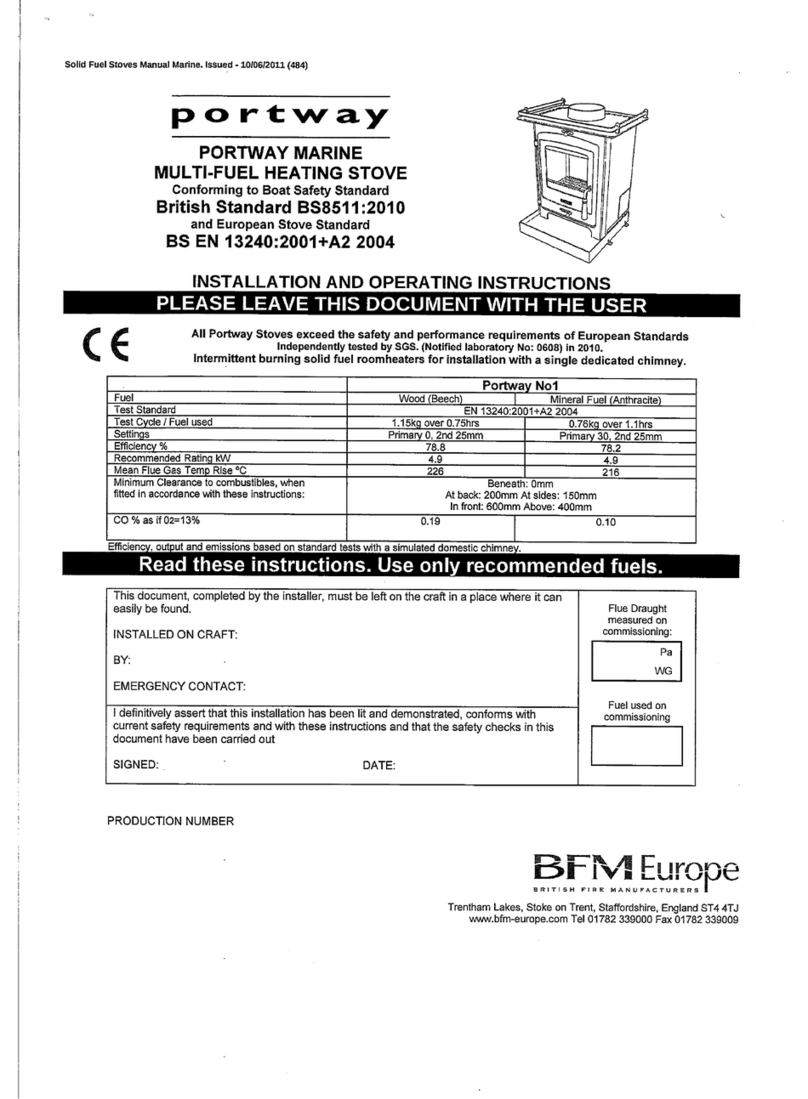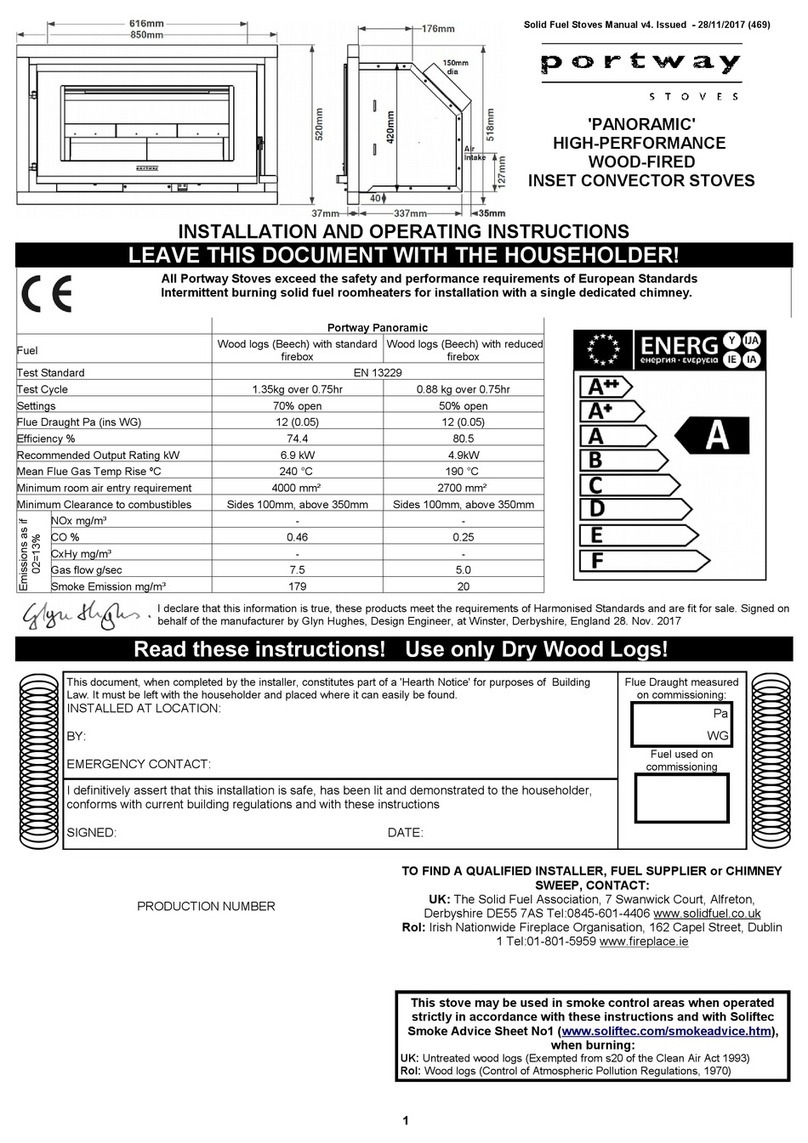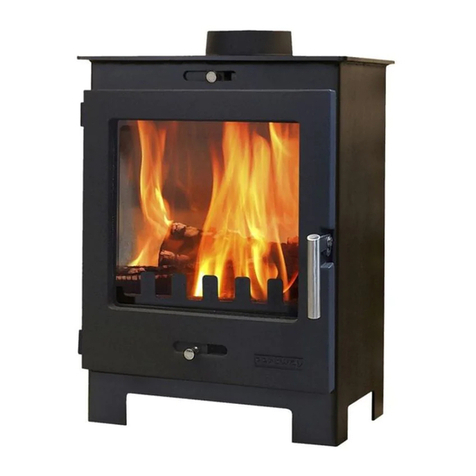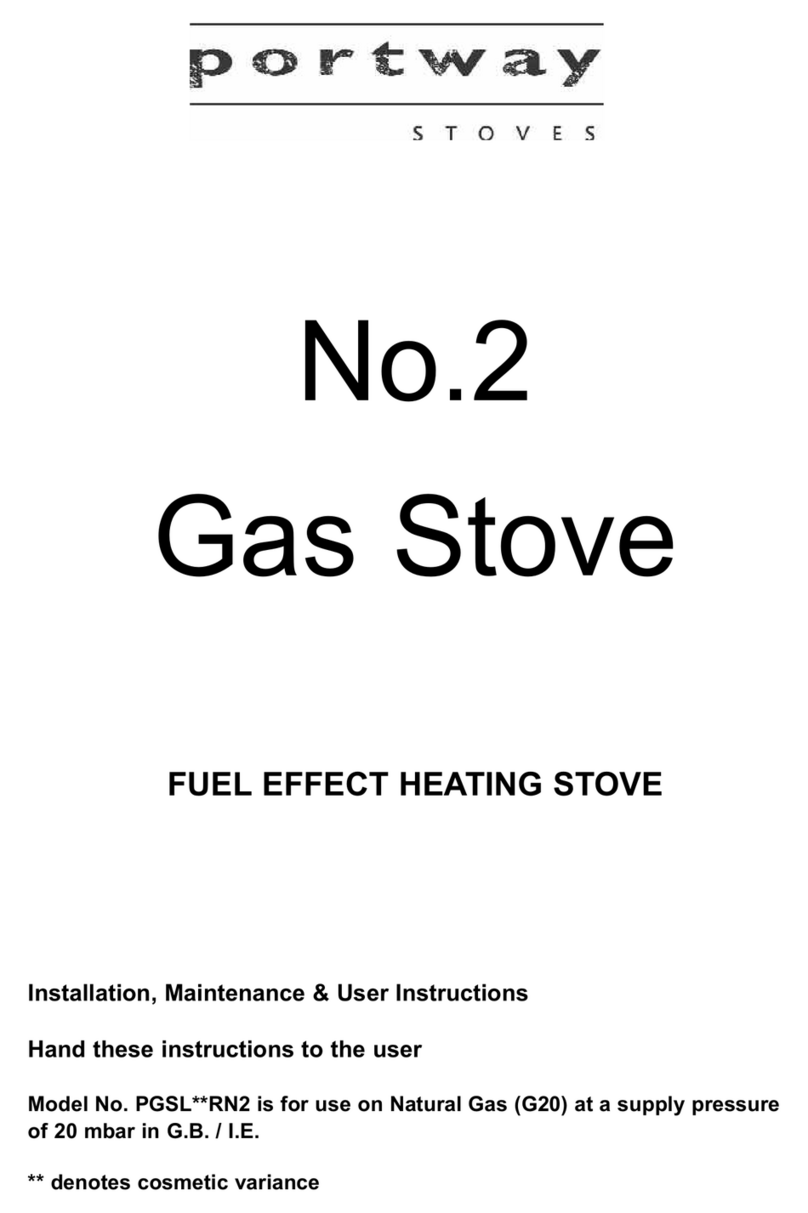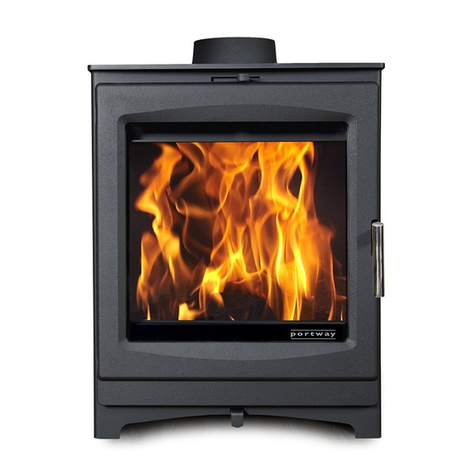becomes extremely hot.
SUMMER SHUT DOWN: Before a long period of non-use, empty fuel
and ash, remove the throat plate and leave all the air controls open to
allow ventilation to reduce condensation.
FUELS
SMOKE CONTROL: In certain areas
special rules apply to reduce smoke
nuisance. Check with your local authority.
WOOD only emits as much carbon to the
atmosphere as the tree took in when
growing, so wood is considered the 'carbon
neutral' fuel. When wood is cut down its cells are full of water. Burning
such wet or 'green' wood wastes heat in making steam and produces
flammable, acidic tars which will cling to, and rapidly damage, your
stove and chimney. Split logs will typically take two years to become
reasonably dry, round logs very much longer. Cracks in the ends, a
hollow sound when tapped and bark falling away are all signs that a
log may be ready for use. The fine, white residue produced when wood
burns is not ash, but the remains of cell walls which can burn if kept
hot enough, so don't de-ash the fire until absolutely necessary when
using wood.
For best performance, and always for low smoke emission:
Split logs lengthways for drying
●Use logs no bigger than about 00mm x 250mm
●Ensure logs are absolutely dry (less than 20% moisture)
●Fill the stove criss-cross, so air can circulate between logs.
●Fill 'little and often'
●Always have the airwash control (2) at least a little open.
●When first lighting, or reviving a fire from embers, use only very
small, thin, dry, sticks.
JOINERY WASTE Dry wood offcuts will burn well, but don't expect
softwood waste to burn as cleanly or for as long as hardwood logs.
PEAT: Sod turf must be thoroughly dry.
LIGNITE (not smokeless) is a natural mineral, between peat and coal.
It lights easily and burns well, but produces much ash
ANTHRACITE (Smokeless) is a natural hard, shiny form of coal. Slow
to light, it can burn for very long periods with great heat. Despite its
high price-per-bag it generally works out to be one of the cheapest of
all fuels. Use the 'small nuts' size.
COKE (Smokeless) is coal from which the smoke has been removed.
Sometimes difficult to light, it burns very cleanly.
BRIQUETTES Are compressed blocks of fuel, generally able to burn
for long periods and remarkable for their consistency. 'Homefire' and
'Phurnacite' are smokeless types while other brands are made from
lignite, peat or housecoal.
DO NOT BURN...
DUSTY MATERIALS like sawdust, can burn far to violently, even
explode. PETROLEUM COKE sold as 'Petcoke', 'Longbeach' and
other names, is made from oil, is very high in acid will rapidly degrade
interior parts. HOUSEHOLD WASTES Some plastics give off toxic
fumes when burned and remember that batteries and aerosols
explode! The stove is not an incinerator. HOUSECOAL or
BITUMINOUS COAL (not smokeless) makes tarry smoke and
flammable gas which make it difficult to control and risk explosions. It
is cheap, but rarely represents value for money. NEVER use liquid
fuels in any form.
PROBLEMS?
Problems like those listed here are usually due to some difficulty with
the installation, chimney or fuels, so please check back through this
leaflet carefully. If necessary seek specialist advice.
SMOKE FROM THE CHIMNEY A little smoke will be emitted from the
chimney when the fire is cold. Use only VERY dry wood or smokeless
fuels. Make sure the 'smoke stop' is in place.
DAMAGED LINERS The BFM stove gets very, very hot inside, it is
quite usual for the replaceable liners to crack or craze. They need only
be replaced when they have almost completely disintegrated. Help
them last longer by using only very dry fuel.
POOR HEAT OUTPUT: A stove can heat a typical room of about 2m³
volume for each kW of output, so a 5kW model can heat up to ( 2 x 5)
63m³, a room of about 5m square. The actual size depends on the
insulation and air-change ratio of the room. To attempt to heat a larger
room will result in excessive fuel consumption and damaging
overheating.
LACK OF CONTROLLABILITY Wood and some other fuels may burn
excessively until the gases in them have been used up. You can
reduce this effect by making sure that the fire is set to 'low' for a while
before refuelling and checking that the door seals fully. For stoves with
a Smoke Stop - adjust the heat output by how much fuel you put on, as
well as by using the controls.
DIFFICULTY BURNING FOR EXTENDED PERIODS If the fire goes
out with fuel still in the firebox, try leaving the air controls open a little
more. Check that the door seals are sound and that there are no
cracks or gaps anywhere in the flue. For longest burning, we
recommend hard fuels such as anthracite. Burn times will be much
shorter when the 'smoke stop' is fitted.
THE DOOR CATCH may need adjusting as
the rope seal 'beds down'. Simply loosen
the screw and move the tapered pin as
shown. Re-tighten the screw.
CONDENSATION onto cool surfaces inside
the stove can be severe if fuel is in any way
page 4 of 5
BFM spares Tel. 01782 339034 Fax 01782 339028
BFM 'Eco2022' stoves are identified by a perforated 'air bar' across the rear inside of the firebox and a firebox roof panel of vermiculite
composite. No models are approximately 390mm wide, 500mm (No2)

